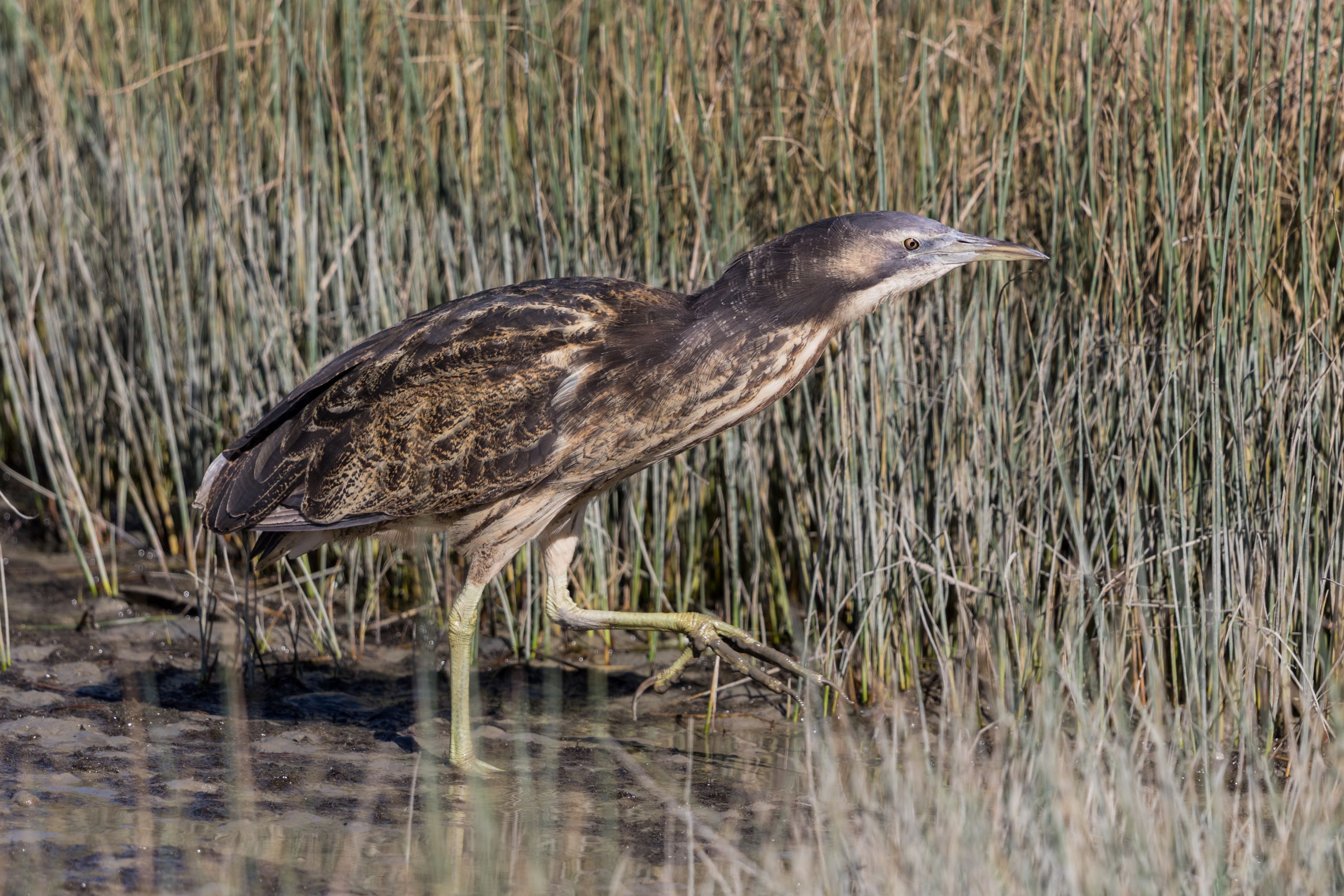
Australasian Bittern: A Mysterious Marshland Inhabitant
Introduction to the Australasian Bittern
The Australasian Bittern, Botaurus poiciloptilus, also known as the Brown Bittern, is a fascinating and elusive bird species predominantly found in the wetlands of Australia, New Zealand, and parts of Indonesia. This secretive bird, belonging to the family Ardeidae, is known for its remarkable camouflage and distinctive booming call, echoing the enigmatic nature of the marshlands it inhabits.
Physical Description
The Australasian Bittern is a medium to large-sized heron, measuring about 70 to 75 cm in length. It possesses a stout body, a thick neck, and a strong, spear-like bill. The plumage is a blend of brown, buff, and black, with a complex pattern of stripes and spots that provide excellent camouflage among reeds and rushes. In flight, its broad wings and heavy, slow wingbeats are characteristic.
Habitat and Distribution
This bittern primarily inhabits freshwater wetlands, such as marshes, reed beds, and swamps. Its range extends across southeastern Australia, Tasmania, New Zealand, and occasionally in parts of Indonesia. The Australasian Bittern's preference for dense vegetation and secluded environments contributes to its elusive nature.
Breeding and Nesting Habits
Breeding typically occurs in dense reed beds, where the Australasian Bittern constructs a platform-like nest close to the water level. These nests are made from reeds and other marsh vegetation, providing a concealed site for egg-laying and chick rearing.
Egg Laying and Incubation
The female lays a clutch of about three to five eggs. The eggs are pale brown or olive, blending with the wetland environment. Incubation, primarily undertaken by the female, lasts around 25 days. During this period, the male may guard the territory against potential threats.
Chick Rearing and Parental Care
Australasian Bittern chicks are born altricial, meaning they are relatively helpless and require considerable parental care. The chicks are fed by both parents, primarily on a diet of fish and invertebrates. They fledge the nest after about seven weeks but remain dependent on parental care for some time.
Feeding Behavior
Their diet mainly consists of fish, frogs, and aquatic invertebrates. They hunt by standing still or walking slowly, using their long bill to capture prey. This bittern's hunting strategy is a perfect adaptation to the still waters of its marshland habitat.
Vocalizations and Communication
One of the most notable characteristics of the Australasian Bittern is its distinctive booming call, particularly prominent during the breeding season. This deep, resonant sound can be heard over long distances, often at dawn or dusk. The call plays a crucial role in territorial displays and mate attraction.
Conservation Status
The Australasian Bittern is classified as Endangered by the IUCN. The primary threats to this species are habitat loss and degradation, primarily due to the drainage of wetlands for agriculture and urban development. Conservation efforts are focused on protecting and restoring suitable wetland habitats.
Similar Species and Taxonomy
The Australasian Bittern belongs to the order Pelecaniformes, family Ardeidae, which includes herons, egrets, and other bitterns. It is closely related to other species of bitterns in the genus Botaurus, such as the American Bittern (Botaurus lentiginosus) and the Eurasian Bittern (Botaurus stellaris). While these species share similar habitats and behaviors, the Australasian Bittern is distinguished by its unique call and specific plumage pattern.
Australasian Bittern in Utah
The Australasian Bittern is not found in Utah or anywhere else in North America. Its presence is restricted to the Australasian region. However, bird enthusiasts in Utah can observe similar marshland birds, such as the American Bittern, in local wetlands.
Conclusion
The Australasian Bittern, Botaurus poiciloptilus, remains one of the most intriguing birds of the Australasian wetlands. Its secretive lifestyle, distinctive call, and specialized habitat preferences make it a species of significant interest to conservationists and bird watchers alike. Protecting the wetlands that sustain the Australasian Bittern is crucial for its survival, highlighting the broader importance of wetland conservation for maintaining biodiversity and ecological balance.